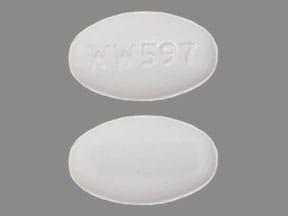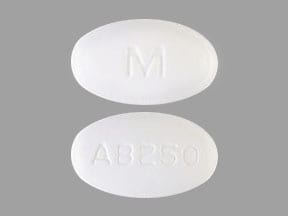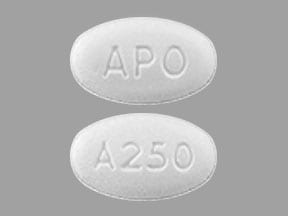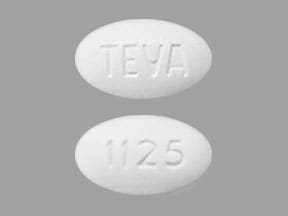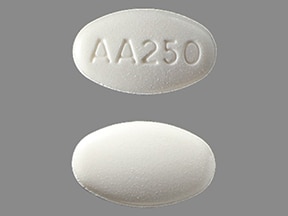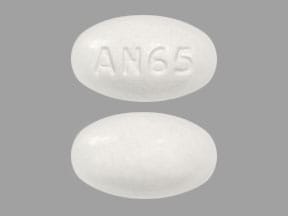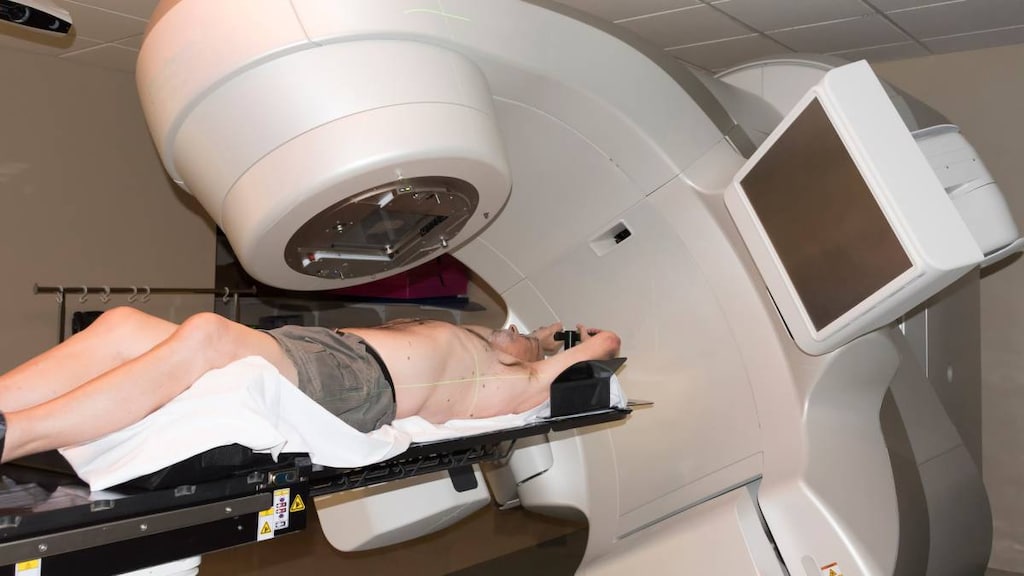Dosage Forms
Excipient information presented when available (limited, particularly for generics); consult specific product labeling.
Tablet, Oral:
Yonsa: 125 mg
Zytiga: 250 mg, 500 mg
Generic: 250 mg
Pharmacology
Mechanism of Action
Abiraterone selectively and irreversibly inhibits CYP17 (17 alpha-hydroxylase/C17,20-lyase), an enzyme required for androgen biosynthesis which is expressed in testicular, adrenal, and prostatic tumor tissues. Inhibits the formation of the testosterone precursors dehydroepiandrosterone (DHEA) and androstenedione.
Pharmacokinetics/Pharmacodynamics
Distribution
Vdss: 19,669 ± 13,358 L
Metabolism
Abiraterone acetate is hydrolyzed to the active metabolite abiraterone; further metabolized to inactive metabolites abiraterone sulphate and N-oxide abiraterone sulphate via CYP3A4 and SULT2A1
Excretion
Feces (~88%); urine (~5%)
Time to Peak
2 hours (Acharya 2012)
Half-Life Elimination
14.4 to 16.5 hours (Acharya 2012)
Protein Binding
>99%; to albumin and alpha1-acid glycoprotein
Use in Specific Populations
Special Populations: Hepatic Function Impairment
After a single oral 1,000 mg dose (Zytiga), systemic exposure increased ~1.1- and 3.6-fold in subjects with mild and moderate hepatic impairment, respectively. The mean half-life was prolonged to ~18 hours and ~19 hours in subjects with mild and moderate impairment, respectively. Systemic exposure of abiraterone increased by 7- fold and the fraction of free drug increased by 2-fold in subjects with severe baseline hepatic impairment. Mean protein binding was found to be lower in patients with severe hepatic impairment.
Use: Labeled Indications
Prostate cancer, metastatic:
Treatment of metastatic, castration-resistant prostate cancer (in combination with prednisone [Zytiga] or methylprednisolone [Yonsa])
Treatment of metastatic, high-risk castration-sensitive prostate cancer (in combination with prednisone [Zytiga])
Contraindications
Females who are or may become pregnant
Canadian labeling: Additional contraindication (not in the US labeling): Hypersensitivity to abiraterone acetate or any component of the formulation or container
Dosage and Administration
Dosing: Adult
Note: Patients receiving abiraterone should also receive a gonadotropin-releasing hormone (GnRH) analog concurrently (or have had a bilateral orchiectomy). Abiraterone acetate is available in different tablet formulations; use caution when selecting dosage form as dosing and food effects vary between products. The formulations are NOT interchangeable; do not substitute between formulations.
Prostate cancer, metastatic, castration-resistant: Oral:
Zytiga: 1,000 mg once daily (in combination with prednisone 5 mg twice daily) (de Bono 2011; Ryan 2015)
Yonsa (micronized formulation): 500 mg once daily (in combination with methylprednisolone 4 mg twice daily)
Prostate cancer, metastatic, high-risk, castration-sensitive: Oral: Zytiga: 1,000 mg once daily (in combination with prednisone 5 mg once daily) (Fizazi 2017)
or (off-label combination; Zytiga) 1,000 mg once daily (in combination with prednisolone 5 mg once daily) (James 2017)
Dosage adjustment for concomitant strong CYP3A4 inducers: Avoid concomitant strong CYP3A4 inducers during treatment; if a strong CYP3A4 inducer must be administered concurrently, increase the abiraterone frequency to twice daily (eg, from 1,000 mg once daily to 1,000 mg twice daily [Zytiga] or from 500 mg once daily to 500 mg twice daily [Yonsa]). Upon discontinuation of the strong CYP3A4 inducer, reduce abiraterone back to the prior dose and frequency.
Dosing: Geriatric
Refer to adult dosing.
Dosing: Adjustment for Toxicity
Hepatotoxicity: Refer to Dosing: Hepatic Impairment.
Administration
Note: Abiraterone acetate is available in different tablet formulations; use caution when selecting dosage form as dosing and food effects vary between products. The formulations are NOT interchangeable; do not substitute between formulations.
Oral: Administer abiraterone (Zytiga) orally on an empty stomach, at least 1 hour before and 2 hours after food. No food should be consumed for at least 2 hours before or for at least 1 hour after the abiraterone (Zytiga) dose. Abiraterone micronized (Yonsa) may be administered without regard to food. Swallow tablets whole with water. Do not crush or chew.
Storage
Store at 20°C to 25°C (68°F to 77°F); excursions are permitted between 15°C and 30°C (59°F and 86°F).
Abiraterone Acetate Images
Drug Interactions
Amphetamines: CYP2D6 Inhibitors (Moderate) may increase the serum concentration of Amphetamines. Monitor therapy
Bosentan: May decrease the serum concentration of CYP3A4 Substrates (High risk with Inducers). Monitor therapy
Choline C 11: Antiandrogens may diminish the therapeutic effect of Choline C 11. Monitor therapy
CloZAPine: CYP2D6 Inhibitors (Moderate) may increase the serum concentration of CloZAPine. Monitor therapy
CYP2D6 Substrates (High risk with Inhibitors): Abiraterone Acetate may increase the serum concentration of CYP2D6 Substrates (High risk with Inhibitors). Management: Avoid concurrent use of abiraterone with CYP2D6 substrates that have a narrow therapeutic index whenever possible. When concurrent use is not avoidable, monitor patients closely for signs/symptoms of toxicity. Consider therapy modification
CYP3A4 Inducers (Moderate): May decrease the serum concentration of CYP3A4 Substrates (High risk with Inducers). Monitor therapy
CYP3A4 Inducers (Strong): May decrease the serum concentration of Abiraterone Acetate. Management: Avoid whenever possible. If such a combination cannot be avoided, increase abiraterone acetate dosing frequency from once daily to twice daily during concomitant use. Consider therapy modification
Dabrafenib: May decrease the serum concentration of CYP3A4 Substrates (High risk with Inducers). Management: Seek alternatives to the CYP3A4 substrate when possible. If concomitant therapy cannot be avoided, monitor clinical effects of the substrate closely (particularly therapeutic effects). Consider therapy modification
Deferasirox: May decrease the serum concentration of CYP3A4 Substrates (High risk with Inducers). Monitor therapy
DOXOrubicin (Conventional): CYP2D6 Inhibitors (Moderate) may increase the serum concentration of DOXOrubicin (Conventional). Management: Seek alternatives to moderate CYP2D6 inhibitors in patients treated with doxorubicin whenever possible. One U.S. manufacturer (Pfizer Inc.) recommends that these combinations be avoided. Consider therapy modification
Eliglustat: CYP2D6 Inhibitors (Moderate) may increase the serum concentration of Eliglustat. Management: Reduce the eliglustat dose to 84 mg daily. Avoid use of eliglustat in combination with a moderate CYP2D6 inhibitor and a strong or moderate CYP3A4 inhibitor. Consider therapy modification
Enzalutamide: May decrease the serum concentration of CYP3A4 Substrates (High risk with Inducers). Management: Concurrent use of enzalutamide with CYP3A4 substrates that have a narrow therapeutic index should be avoided. Use of enzalutamide and any other CYP3A4 substrate should be performed with caution and close monitoring. Consider therapy modification
Erdafitinib: May decrease the serum concentration of CYP3A4 Substrates (High risk with Inducers). Monitor therapy
Fesoterodine: CYP2D6 Inhibitors may increase serum concentrations of the active metabolite(s) of Fesoterodine. Monitor therapy
Indium 111 Capromab Pendetide: Antiandrogens may diminish the diagnostic effect of Indium 111 Capromab Pendetide. Avoid combination
Ivosidenib: May decrease the serum concentration of CYP3A4 Substrates (High risk with Inducers). Monitor therapy
Lorlatinib: May decrease the serum concentration of CYP3A4 Substrates (High risk with Inducers). Management: Avoid concurrent use of lorlatinib with any CYP3A4 substrates for which a minimal decrease in serum concentrations of the CYP3A4 substrate could lead to therapeutic failure and serious clinical consequences. Consider therapy modification
Mitotane: May decrease the serum concentration of CYP3A4 Substrates (High risk with Inducers). Management: Doses of CYP3A4 substrates may need to be adjusted substantially when used in patients being treated with mitotane. Consider therapy modification
Nebivolol: CYP2D6 Inhibitors (Moderate) may increase the serum concentration of Nebivolol. Monitor therapy
Perhexiline: CYP2D6 Inhibitors may increase the serum concentration of Perhexiline. Management: Consider alternatives to this combination if possible. If combined, monitor for increased perhexiline serum concentrations and toxicities (eg, hypoglycemia, neuropathy, liver dysfunction). Perhexiline dose reductions will likely be required. Consider therapy modification
Pitolisant: CYP2D6 Inhibitors (Moderate) may increase the serum concentration of Pitolisant. Monitor therapy
Radium Ra 223 Dichloride: May enhance the adverse/toxic effect of Abiraterone Acetate. Specifically, the risk for fractures and death may be increased. Avoid combination
Repaglinide: CYP2C8 Inhibitors (Weak) may increase the serum concentration of Repaglinide. Monitor therapy
Rifabutin: May decrease the serum concentration of Abiraterone Acetate. Monitor therapy
Rifapentine: May decrease the serum concentration of Abiraterone Acetate. Monitor therapy
Sarilumab: May decrease the serum concentration of CYP3A4 Substrates (High risk with Inducers). Monitor therapy
Siltuximab: May decrease the serum concentration of CYP3A4 Substrates (High risk with Inducers). Monitor therapy
Spironolactone: May diminish the therapeutic effect of Abiraterone Acetate. Monitor therapy
Tamoxifen: CYP2D6 Inhibitors (Moderate) may decrease serum concentrations of the active metabolite(s) of Tamoxifen. Specifically, CYP2D6 inhibitors may decrease the metabolic formation of highly potent active metabolites. Management: Consider alternatives with less of an inhibitory effect on CYP2D6 activity when possible. Consider therapy modification
Tamsulosin: CYP2D6 Inhibitors (Moderate) may increase the serum concentration of Tamsulosin. Monitor therapy
Thioridazine: CYP2D6 Inhibitors may increase the serum concentration of Thioridazine. Avoid combination
Tocilizumab: May decrease the serum concentration of CYP3A4 Substrates (High risk with Inducers). Monitor therapy
TraMADol: CYP2D6 Inhibitors (Moderate) may diminish the therapeutic effect of TraMADol. These CYP2D6 inhibitors may prevent the metabolic conversion of tramadol to its active metabolite that accounts for much of its opioid-like effects. Monitor therapy
Adverse Reactions
Adverse reactions reported for use in combination with a corticosteroid.
>10%:
Cardiovascular: Hypertension (9% to 37%), edema (25% to 27%)
Central nervous system: Fatigue (39%), insomnia (14%)
Endocrine & metabolic: Hypertriglyceridemia (63%), hyperglycemia (57%), hypernatremia (33%), hypokalemia (17% to 30%), hypophosphatemia (24%), hot flash (15% to 22%)
Gastrointestinal: Constipation (23%), diarrhea (18% to 22%), dyspepsia (6% to 11%)
Genitourinary: Urinary tract infection (7% to 12%)
Hematologic & oncologic: Lymphocytopenia (20% to 38%; grades 3/4: 4% to 9%), bruise (13%)
Hepatic: Increased serum alanine aminotransferase (11% to 46%), increased serum aspartate aminotransferase (15% to 37%), increased serum bilirubin (7% to 16%)
Neuromuscular & skeletal: Arthralgia (≤30%), joint swelling (≤30%), myalgia (26%)
Respiratory: Cough (7% to 17%), upper respiratory infection (5% to 13%), dyspnea (12%), nasopharyngitis (11%)
1% to 10%:
Cardiovascular: Cardiac arrhythmia (7%), chest discomfort (≤4%), chest pain (≤4%), cardiac failure (2%)
Central nervous system: Headache (8%), falling (6%)
Dermatologic: Skin rash (8%)
Genitourinary: Hematuria (10%), groin pain (7%), urinary frequency (7%), nocturia (6%)
Neuromuscular & skeletal: Bone fracture (6%)
Miscellaneous: Fever (9%)
<1%, postmarketing, and/or case reports: Acute hepatic failure, adrenocortical insufficiency, fulminant hepatitis, myopathy, pneumonitis, rhabdomyolysis
Warnings/Precautions
Concerns related to adverse effects:
- Adrenocortical insufficiency: Concurrent infection, stress, or interruption of daily corticosteroids is associated with reports of adrenocortical insufficiency. Monitor closely for signs and symptoms of adrenocorticoid insufficiency, which could be masked by adverse events associated with mineralocorticoid excess. Diagnostic testing for adrenal insufficiency may be clinically indicated. Increased corticosteroid doses may be required before, during, and after stress.
- Hepatotoxicity: Severe hepatotoxicity (eg, fulminant hepatitis, acute liver failure, and death) has been reported. Significant increases in liver enzymes (including grade 3 and 4 events) have also been observed (higher likelihood in patients with baseline elevations), generally occurring in the first 3 months of treatment. May require dosage reduction, treatment interruption, and/or discontinuation. ALT, AST, and bilirubin should be monitored prior to treatment, every 2 weeks for 3 months and monthly thereafter; patients with hepatic impairment, elevations in liver function tests, or experiencing hepatotoxicity require more frequent monitoring (see dosage adjustment for hepatic impairment and monitoring parameters). Evaluate liver function promptly with signs or symptoms of hepatotoxicity. The safety of retreatment after significant elevations (ALT or AST ≥20 times the ULN and/or total bilirubin ≥10 times ULN) has not been evaluated.
- Mineralocorticoid excess: Increased mineralocorticoids due to CYP17 inhibition may result in hypertension, hypokalemia, and fluid retention (including grade 3 and 4 events). Monitor at least monthly for hypertension, hypokalemia, and fluid retention (if necessary, control blood pressure and correct hypokalemia prior to and during treatment). Concomitant administration with corticosteroids reduces the incidence and severity of these adverse events.
Disease-related concerns:
- Cardiovascular disease: May cause hypertension, hypokalemia, and fluid retention. Control hypertension and correct hypokalemia prior to and during treatment. QT prolongation and torsades de pointes have been observed rarely (postmarketing reports) in patients who developed hypokalemia during abiraterone administration. Monitor patients with cardiovascular disease closely, particularly those with heart failure, recent MI, or ventricular arrhythmia. Patients with left ventricular ejection fraction (LVEF) <50% or NYHA class II, III, or IV heart failure were excluded from clinical trials. Monitor at least monthly for hypertension, hypokalemia, and fluid retention.
- Hepatic impairment: Do not use in patients with preexisting severe hepatic impairment (Child-Pugh class C); dosage reduction is recommended in patients with baseline moderate impairment.
Concurrent drug therapy issues:
- Drug-drug interactions: Potentially significant interactions may exist, requiring dose or frequency adjustment, additional monitoring, and/or selection of alternative therapy. Consult drug interactions database for more detailed information.
- Radium Ra 223 dichloride: Due to an increased risk of fractures and mortality, the use of abiraterone plus prednisone or prednisolone in combination with radium Ra 223 dichloride is not recommended.
Dosage form specific issues:
- Tablet formulations: Abiraterone acetate is available in different tablet formulations (the conventional formulation [Zytiga] and a micronized [fine particle] formulation [Yonsa]); use caution when selecting dosage form as dosing and food effects vary between products. The formulations are NOT interchangeable; do not substitute between formulations.
Other warnings/precautions:
- Food: Abiraterone (Zytiga) must be administered on an empty stomach (administer at least 1 hour before and 2 hours after any food); abiraterone AUC (exposure) may be increased up to 10-fold if administered with a meal. Abiraterone micronized (Yonsa) may be administered without regard to food.
Monitoring Parameters
ALT, AST, and bilirubin prior to treatment, every 2 weeks for 3 months and monthly thereafter; if baseline moderate hepatic impairment (Child-Pugh class B), monitor ALT, AST, and bilirubin prior to treatment, weekly for the first month, every 2 weeks for 2 months then monthly thereafter. If hepatotoxicity develops during treatment (and only after therapy is interrupted and liver function tests have returned to safe levels), monitor ALT, AST, and bilirubin every 2 weeks for 3 months and monthly thereafter. Monitoring of testosterone levels is not necessary. Serum potassium (prior to treatment and at least monthly).
Monitor for signs and symptoms of adrenocorticoid insufficiency; if clinically indicated, consider appropriate diagnostics to confirm adrenal insufficiency. Monitor blood pressure and for fluid retention (prior to treatment and at least monthly). Monitor adherence.
Pregnancy
Pregnancy Considerations
Based on the mechanism of action and adverse effects observed in animal reproduction studies, abiraterone may cause fetal harm or fetal loss if administered during pregnancy. Abiraterone is not indicated for use in females.
Abiraterone is available in uncoated and film-coated tablets and in micronized tablets; the manufacturer recommends females who are or may become pregnant wear gloves if handling uncoated tablets, micronized tablets, or tablets that are broken, crushed, or damaged. NIOSH recommends single gloving for administration of hazardous intact oral tablets (NIOSH 2016).
Male patients with female partners of reproductive potential should use effective contraception during treatment and for 3 weeks after the last abiraterone dose.
Patient Education
What is this drug used for?
- It is used to treat prostate cancer.
- It may be given for other reasons. Talk with the doctor.
Frequently reported side effects of this drug
- Flushing
- Muscle pain
- Joint pain
- Joint swelling
- Heartburn
- Cough
- Diarrhea
- Constipation
- Common cold symptoms
- Stuffy nose
- Sore throat
- Trouble sleeping
- Nausea
- Vomiting
Other side effects of this drug: Talk with your doctor right away if you have any of these signs of:
- Electrolyte problems like mood changes, confusion, muscle pain or weakness, abnormal heartbeat, seizures, lack of appetite, or severe nausea or vomiting
- Liver problems like dark urine, fatigue, lack of appetite, nausea, abdominal pain, light-colored stools, vomiting, or yellow skin.
- Adrenal gland problems like severe nausea, vomiting, severe dizziness, passing out, muscle weakness, severe fatigue, mood changes, lack of appetite, or weight loss
- Urinary tract infection like blood in the urine, burning or painful urination, passing a lot of urine, fever, lower abdominal pain, or pelvic pain
- High blood sugar like confusion, fatigue, increased thirst, increased hunger, passing a lot of urine, flushing, fast breathing, or breath that smells like fruit
- Severe headache
- Severe dizziness
- Passing out
- Vision changes
- Abnormal heartbeat
- Fast heartbeat
- Difficulty breathing
- Weight gain
- Edema
- Bone pain
- Severe loss of strength and energy
- Bruising
- Signs of a significant reaction like wheezing; chest tightness; fever; itching; bad cough; blue skin color; seizures; or swelling of face, lips, tongue, or throat.
Note: This is not a comprehensive list of all side effects. Talk to your doctor if you have questions.
Consumer Information Use and Disclaimer: This information should not be used to decide whether or not to take this medicine or any other medicine. Only the healthcare provider has the knowledge and training to decide which medicines are right for a specific patient. This information does not endorse any medicine as safe, effective, or approved for treating any patient or health condition. This is only a brief summary of general information about this medicine. It does NOT include all information about the possible uses, directions, warnings, precautions, interactions, adverse effects, or risks that may apply to this medicine. This information is not specific medical advice and does not replace information you receive from the healthcare provider. You must talk with the healthcare provider for complete information about the risks and benefits of using this medicine.
